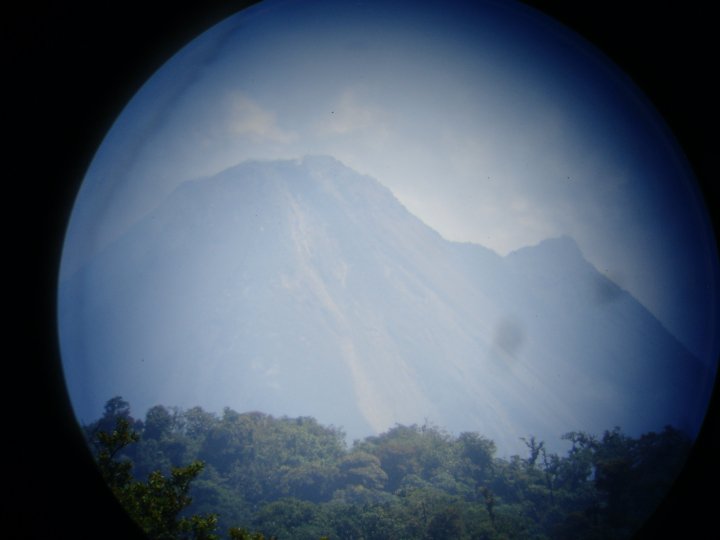Hola Readers,
 |
This is my view of the Poás Volcano from when I visited.
|
Welcome to San Jose! Today we are going to explore outside
of the city in Poás National Park, this is the home of the Poás
Volcano. The Poás Volcano is a stratovolcano also known as a
composite volcano. It is made up of many layers. These layers or strata
are composed of hardened lava, tephra, pumice and volcanic ash.
The Poás Volcano is currently active and has erupted 39 times since 1828. The
volcano was once very explosive and now has many craters. Near the summit of
Poás there are two crater lakes the most famous lake is called Laguna Caliente
(“Hot Lagoon”) it is known to be one of the most acidic lakes in the world. The lake sometimes reaches a pH level of
almost zero.
 |
On Average this is the view of the Poás Volcano.
Next stop is the Arenal Volcano. The Arenal Volcano is an
active andesitic stratovolcano. It is a mix of MAFIC/FELSIC the Arenal Volcano has the
cinder cone shape but it also very
explosive. Andesite is an extrusive,
igneous, volcanic rock and is a characteristic of subduction zones. The Arenal
Volcano is famous for it’s nighttime show of spitting lava into the sky. Most
volcanoes in Central America have very thick, viscous lava that is filled with
gases and this causes the more violent explosions when they erupt.
|
 |
The Arenal Volcano from up close!
 |
| This is a picture of the Arenal Volcano that I took using binoculars.
|
|
 |
|
The nighttime light show of the Arenal Volcano
So how are these volcanoes formed? The volcanoes in Costa
Rica are formed by subduction. The western side of the Caribbean plate subducts
the Cocos plate located in the Pacific Ocean. The more dense Cocos plate currently moves
about 10 centimeters per year.
I hoped this gave you some information about two very
interesting volcanoes in Costa Rica. Until next time!
Adios,
Danielle
|





